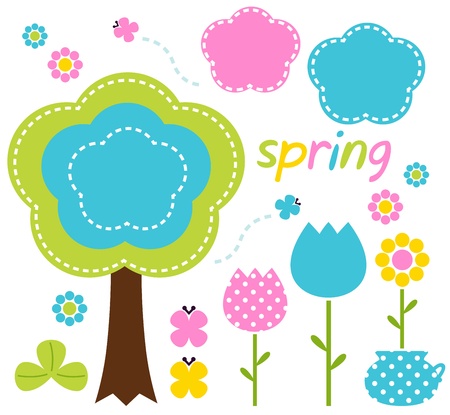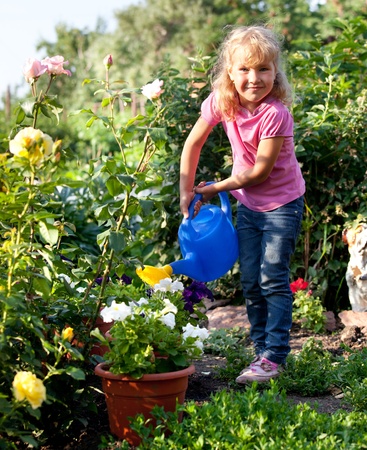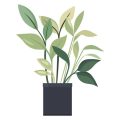1. Assess Winter Damage and Clear Debris
February is the perfect time to take a walk through your yard and see how your garden held up over the winter. Cold weather, snow, ice, and strong winds can leave behind broken branches, damaged plants, and piles of debris that need attention before spring growth begins.
Check for Common Winter Damage
As you inspect your garden, look for signs of stress or damage caused by harsh winter conditions. Here are some key things to watch out for:
| Type of Damage | What to Look For |
|---|---|
| Frost Damage | Blackened or mushy leaves on perennials and shrubs |
| Wind Damage | Broken stems or leaning trees/shrubs |
| Snow/Ice Breakage | Split branches or flattened plants |
Tidy Up Garden Beds
Once youve checked for damage, it’s time to clean up. Clear away any fallen branches, dead plant material, and leftover leaves from flower beds and vegetable plots. Removing debris now helps prevent pests and diseases from taking hold as the weather warms up.
Debris to Remove
- Dead annuals that didn’t survive the frost
- Dried stems and foliage from last season’s perennials (unless you’re leaving them for wildlife)
- Piles of wet leaves that could smother new growth
Tip:
Add healthy organic matter like small twigs and dried leaves to your compost pile, but discard anything showing signs of disease.
2. Prune Trees and Shrubs
Mid to late February is a great time to prune your deciduous trees and shrubs while they’re still in their winter dormancy. This timing helps prevent stress on the plants and encourages healthy, vigorous growth once spring arrives.
Why Pruning in February Matters
Pruning during dormancy reduces the risk of disease and pest infestation. Without leaves in the way, its easier to see the structure of branches and make cleaner cuts where needed. Proper pruning improves airflow and light penetration, setting up your landscape for a strong growing season.
What to Look For When Pruning
Focus on removing:
- Dead branches – These can harbor pests or diseases and should be cut back to healthy wood.
- Diseased limbs – Look for discolored or brittle wood, signs of fungi, or oozing sap.
- Crossing branches – Branches that rub against each other can cause wounds that become entry points for disease.
- Suckers and water sprouts – These fast-growing shoots sap energy from the main plant and should be removed.
Basic Tools You’ll Need
| Tool | Use |
|---|---|
| Hand pruners | For small branches up to ¾ inch thick |
| Loppers | For medium-sized branches up to 1½ inches thick |
| Pruning saw | For larger limbs over 1½ inches thick |
| Gloves & safety glasses | To protect your hands and eyes while working |
Pro Tip:
Avoid pruning spring-flowering shrubs like lilacs or azaleas right now—wait until after they bloom so you don’t cut off this year’s flower buds.
Reminder:
Always use clean, sharp tools to make smooth cuts and reduce the risk of spreading disease between plants.

3. Start Seeds Indoors
February is the perfect time to get a head start on your spring garden by starting seeds indoors. Even though it’s still cold outside in many parts of the U.S., you can begin sowing seeds for cool-season crops and early-blooming flowers right from the warmth of your home.
What to Start Indoors This Month
Here are some great choices for February seed starting:
| Vegetables | Flowers | Herbs |
|---|---|---|
| Broccoli | Snapdragon | Basil |
| Lettuce | Pansies | Parsley |
| Onions | Ageratum | Chives |
Tips for Successful Indoor Seed Starting
Use Grow Lights
Winter days are short, and natural sunlight may not be enough for seedlings to thrive. Using grow lights ensures your plants get the light they need to grow strong and healthy.
Choose the Right Containers
You can use seed trays, peat pots, or even recycled containers—just make sure they have drainage holes.
Keep Soil Warm and Moist
Most seeds germinate best at temperatures between 65–75°F. Use a heat mat if needed and keep the soil consistently moist, but not soggy.
Label Everything
It’s easy to forget what you planted where. Use plant labels or popsicle sticks to keep track of your seedlings.
Pro Tip:
If youre new to seed starting, try a beginner-friendly kit that includes everything you need—seed trays, starter mix, and a humidity dome.
Starting seeds indoors in February gives you a head start on the growing season and lets you enjoy gardening even while its still chilly outside. Plus, it’s a great way to bring a little green into your home during winter!
4. Prepare Garden Tools and Supplies
February is the perfect time to get a head start on spring by making sure all your gardening tools and supplies are in top shape. Before the busy planting season begins, take some time to inspect, clean, and sharpen your tools. Not only does this make gardening easier, but it also helps extend the life of your equipment.
Inspect and Clean Your Tools
Check each tool for rust, damage, or loose parts. Use a wire brush or steel wool to remove any dirt or rust. Wash with soapy water, rinse well, and dry completely before storing. For wooden handles, consider applying linseed oil to prevent cracking.
Common Tools to Check:
| Tool | Maintenance Tip |
|---|---|
| Pruners & Shears | Sharpen blades and oil joints |
| Trowels & Shovels | Clean off soil and check for cracks |
| Rakes & Hoes | Tighten loose heads and smooth splinters on handles |
| Watering Cans & Hoses | Inspect for leaks or blockages |
Take Inventory of Gardening Supplies
Review what you already have and make a list of what youll need for spring. Check expiration dates on seed packets and ensure fertilizers are stored properly. Organize your potting mix, compost, plant markers, gloves, and other essentials so theyre easy to access when planting begins.
Spring Supply Checklist:
- Seed packets (check germination dates)
- Potting soil and compost
- Organic or synthetic fertilizers
- Plant labels and markers
- Gardening gloves in good condition
- Pots, trays, and grow lights if starting seeds indoors
By preparing your tools and supplies now, youll be ready to hit the ground running when the weather warms up. A little organization in February goes a long way toward a smooth start to your spring garden.
5. Plan and Design Your Spring Garden
February is the perfect time to start planning your spring garden. Even though it may still be chilly outside, you can warm up with some creative garden dreaming indoors. Taking time now to map out your garden will help you stay organized and make the most of your space when planting season begins.
Sketch Out Planting Layouts
Start by drawing a simple layout of your garden beds. Whether you’re working with raised beds, containers, or in-ground plots, having a visual plan helps you use your space efficiently. Think about plant spacing, sun exposure, and how tall certain plants will grow so that everything gets enough light and room to thrive.
Choose New Plant Varieties
Consider trying out new vegetable or flower varieties this year. Check seed catalogs or visit local nurseries online for inspiration. Look for varieties that are well-suited to your USDA hardiness zone and have qualities you want—like drought resistance, fast maturity, or improved flavor.
Popular Choices by Region
| Region | Vegetables | Flowers |
|---|---|---|
| Northeast | Kale, Peas, Lettuce | Daffodils, Coneflowers |
| Southeast | Okra, Tomatoes, Beans | Zinnias, Marigolds |
| Midwest | Corn, Carrots, Beets | Black-eyed Susans, Daylilies |
| West Coast | Broccoli, Artichokes, Chard | California Poppies, Lavender |
| Southwest | Chiles, Squash, Melons | Pentas, Salvia |
Rotate Crops to Keep Soil Healthy
If you grew vegetables last year, try rotating where you plant them this season. Crop rotation helps prevent soil-borne diseases and nutrient depletion. For example, follow nitrogen-fixing legumes like beans with leafy greens the next year.
Simple Crop Rotation Example
| Year 1 Crop Type | Year 2 Suggestion |
|---|---|
| Tomatoes (Fruit) | Lettuce (Leafy) |
| Carrots (Root) | Beans (Legume) |
| Cabbage (Leafy) | Corn (Grain) |
Add Native Plants and Pollinator-Friendly Options
This is also a great time to research native plants and flowers that attract bees, butterflies, and other pollinators. Native plants usually require less maintenance and water because they’re adapted to your area’s conditions. Pollinator-friendly gardens not only look beautiful but also support biodiversity.
Pollinator Favorites by Region:
- Northeast: Milkweed, Bee Balm
- Southeast: Coreopsis, Blazing Star
- Midwest: Prairie Clover, Goldenrod
- West Coast: Yarrow, Lupine
- Southwest: Desert Marigold, Penstemon
A little planning now goes a long way toward a successful spring garden. Grab a notebook or gardening app and start mapping out your ideas today!


